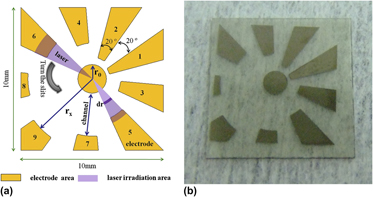Article contents
Effects of substrate crystallinity on the on-state resistance of 6H–SiC photoconductive switches
Published online by Cambridge University Press: 15 August 2012
Abstract

In this work, the relationship between the substrate crystallinity and the on-state resistances of silicon carbide (SiC) photoconductive semiconductor switches (PCSSs) was investigated. PCSSs with different channel lengths were fabricated on semi insulating 6H–SiC having different crystal qualities. A method was introduced for determining the photoconductive capacity of the SiC PCSSs. The experimental data suggest that the photoconductive capacity decreases sharply with the degradation of the full width at half maximum of the rocking curve of the 6H–SiC substrates. It is found that increasing the carrier mobility is a key factor for reducing the on-state resistance of the 6H–SiC PCSSs. Moreover, the results in this work present reference for the selection of 6H–SiC substrates for the fabrication of PCSSs and some other photoelectric devices.
- Type
- Articles
- Information
- Journal of Materials Research , Volume 28 , Issue 1: Focus Issue: Silicon Carbide – Materials, Processing and Devices , 14 January 2013 , pp. 38 - 43
- Copyright
- Copyright © Materials Research Society 2012
References
REFERENCES
- 1
- Cited by




